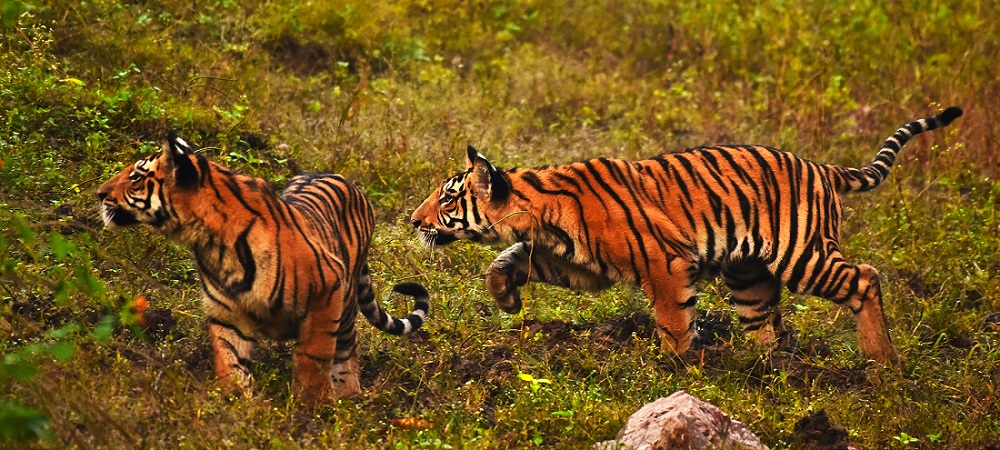Pench National Park, straddling the states of Madhya Pradesh and Maharashtra in Central India, is a jewel of natural beauty and biodiversity. Spanning 758 square kilometers, this park is renowned for its rich flora and fauna, offering a sanctuary to a myriad of species and a serene escape for nature enthusiasts. Named after the Pench River, which meanders through the park, this reserve is a tapestry of lush teak forests, open grasslands, and dense undergrowth, providing a perfect habitat for wildlife.
Historical and Cultural Significance of Pench
Pench National Park is steeped in history and culture, with references dating back to ancient times. The park's landscape and wildlife inspired Rudyard Kipling's famous novel, "The Jungle Book," which brings an aura of nostalgia and intrigue to the area. Additionally, the region has been mentioned in the Ain-i-Akbari, a 16th-century document chronicling the administration of the Mughal Emperor Akbar, emphasizing its long-standing importance.
Biodiversity and Wildlife at Pench Tiger Reserve
Pench is celebrated for its incredible biodiversity. The park is home to around 40 species of mammals, 210 species of birds, 13 species of reptiles, and 3 species of amphibians. Among its most famous residents are the Bengal tigers, which roam the park freely, making Pench one of the best places in India to spot these majestic predators in their natural habitat? The park also shelters other large mammals such as leopards, wild boars, sloth bears, Indian bison (gaur), and packs of Indian wild dogs (dholes).
The avian population is equally impressive, attracting bird watchers from around the world. Species like the Malabar pied hornbill, Indian pitta, osprey, grey-headed fish eagle, and the migratory bar-headed goose can be spotted here. The diverse birdlife is supported by the park's varied ecosystems, including its riverine forests, open spaces, and water bodies.
Flora and Ecosystem of Pench
The park's vegetation is predominantly dry deciduous forest, interspersed with patches of moist deciduous and teak forest. The undergrowth is dense, with a variety of shrubs, grasses, and climbers, providing ample food and shelter for the herbivorous species and smaller creatures of the park. The Pench River, along with several other perennial and seasonal streams, forms the lifeline of the park, ensuring a thriving ecosystem even during the dry seasons.
Forest Preservation Efforts of Pench
Pench National Park is part of the Project Tiger initiative, launched by the Government of India in 1973 to protect the endangered Bengal tiger. Conservation efforts in the park are robust, focusing on anti-poaching measures, habitat restoration, and community involvement. The park authorities work tirelessly to maintain the delicate balance of the ecosystem, ensuring that the natural habitat is preserved while fostering a positive relationship with the local communities.
Tourism and Accessibility to Pench
Pench National Park offers a range of activities for tourists, including jeep safaris, nature walks, bird watching tours, and boat rides along the Pench River. The park is accessible through several gates, with Touria Gate in Madhya Pradesh being the most popular. The best time to visit is between November and May, when the weather is pleasant and wildlife sightings are frequent.
Accommodation options around Pench cater to various preferences and budgets, from luxurious resorts and eco-friendly lodges to budget hotels and camping sites. These facilities often offer guided tours and safaris, enhancing the visitor experience.
Pench National Park is a testament to India's rich natural heritage and conservation success. Its diverse wildlife, vibrant ecosystems, and historical significance make it a must-visit destination for nature lovers and wildlife enthusiasts. As you traverse its verdant landscapes and witness its magnificent inhabitants, Pench Tour Package offers not just a glimpse into the wild, but an immersion into the heart of nature itself.

